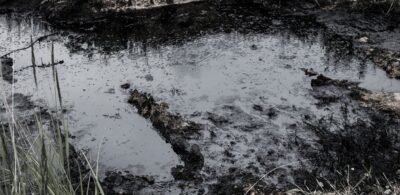Stockpiles of Legal Risk: What do local governments and regulators need to consider when it comes to environmental hazards?
24 August 2017
Recent revelations on the ABC’s Four Corners regarding the widespread unregulated dumping and stockpiling of materials designated for recycling raise numerous regulatory and legal risks. But these risks are not limited only to those doing the dumping and stockpiling – they extend further, in particular to local governments and regulators.
While the recyclable material itself may take a long time to build up, serious environmental hazards and the legal risks that come with them can arise suddenly and with little warning. For example, in July of this year, a fire at a Coolaroo recycling plant spread smoke, soot and ash across outer northern suburbs of Melbourne, with ash reaching 20km south to the Melbourne CBD. A recent class action regarding the Coolaroo fire alleges that stockpiling and mixing of flammable materials were in part the cause of the fire.
Litigation risks for local governments and regulators
Because the regulatory space is crammed with different players, each with different roles and responsibilities, there are numerous local government authorities and regulators who can be drawn into litigation of the kind mentioned above in regard to environmental hazards. These include:
-
local councils, who collect (and spend) revenue for kerbside and other recycling services (and who many would assume have direct control over what happens to their recycling);
-
statutory authorities, such as Waste and Resource Recovery Groups, who negotiate and administer waste and recycling contracts (and enforce their terms) on behalf of multiple local councils;
-
private companies contracted to actually collect and process the waste (these range from giant multi-national companies to small, family run businesses, and operate under different contracts in different areas in relation to different waste);
-
Sustainability Victoria, which has state-wide responsibility for waste management strategy and planning; and
-
the Environment Protection Authorities in each State, which are responsible for regulating pollution and granting or revoking many of the licences and permits relating to polluting activities.
This patchwork of players, contracts, legislation and regulation means that when serious environmental hazards arise, resulting litigation will likely involve many different parties and be complex and hard-fought. Claims could also be made against:
-
the company responsible for the stockpiling;
-
regulators (with allegations of inadequate monitoring or supervision); and
-
local councils (with allegations of inappropriate licensing of landfill sites). (Claims against local government and regulators are more likely than those against companies, as companies responsible for stockpiling may be unable to satisfy a large damages award or may even be insolvent).
An example of hard-fought, multi-party litigation in relation to a serious environmental hazard occurred in Victoria recently. In 2008, residents of a housing estate in the Melbourne suburb of Cranbourne were evacuated from their homes because of a leak of potentially deadly landfill gas from a former landfill site. Residents brought a class action against councils, waste management groups, the EPA and others, which was settled for $23.5 million in 2011. However, litigation between Frankston and Casey councils and others about who was responsible and for what continued well into 2013.
Local government authorities in particular face added risk from the regulators. Councils are often the waste receiving entities, either at landfills or waste transfer stations, meaning they must comply with all applicable environmental authorities and approvals to operate their facilities, as well as the general environmental duty to take all practicable measures to prevent or minimise environmental harm (along with the duty to notify actual or threatened environmental harm).
The scenario becomes even more complex for amalgamated local government authorities, because newly formed councils inherit the risks and liabilities associated with the operation of existing and closed waste facilities from the former councils. Such facilities could be decades old, with minimal or no records of appropriate environmental management, inadequate landfill lining and capping, unexecuted post-closure planning and maintenance, and so on. Commissioning independent audits of such facilities to identify any matters of non-compliance to be addressed before potential environmental harm is caused or threatened should be carefully considered.
Looking ahead
In direct response to the Four Corners story, the Queensland Government has announced that it will establish a three month independent investigation into the transport of waste into Queensland. With a State election due to be held early next year, however, it is unclear whether the investigation will result in policy or legislative change being actioned in the short-term.
Local governments and regulators alike should be mindful of the fact that chronic, widespread issues with stockpiling and unregulated dumping have the capacity to quickly become immediate large scale environmental hazards. Any strategies to minimise legal risk must not only take a proactive approach to improving regulatory compliance, but must also be ready to address and manage large-scale litigation and disputes.
Authors

Partner

Partner

Head of Environment and Planning
Tags
This publication is introductory in nature. Its content is current at the date of publication. It does not constitute legal advice and should not be relied upon as such. You should always obtain legal advice based on your specific circumstances before taking any action relating to matters covered by this publication. Some information may have been obtained from external sources, and we cannot guarantee the accuracy or currency of any such information.
Key Contact
Other Contacts
Head of Environment and Planning


